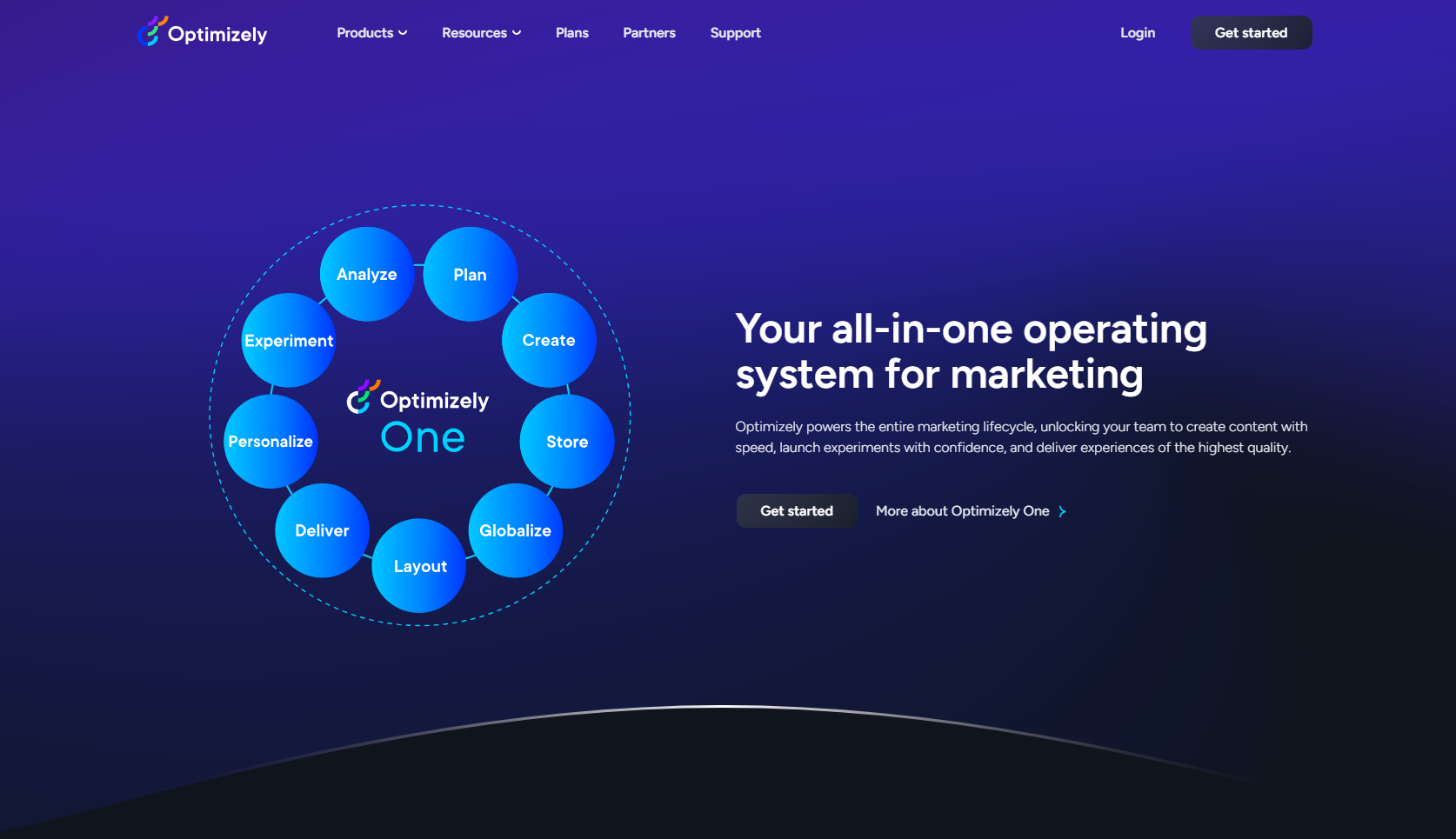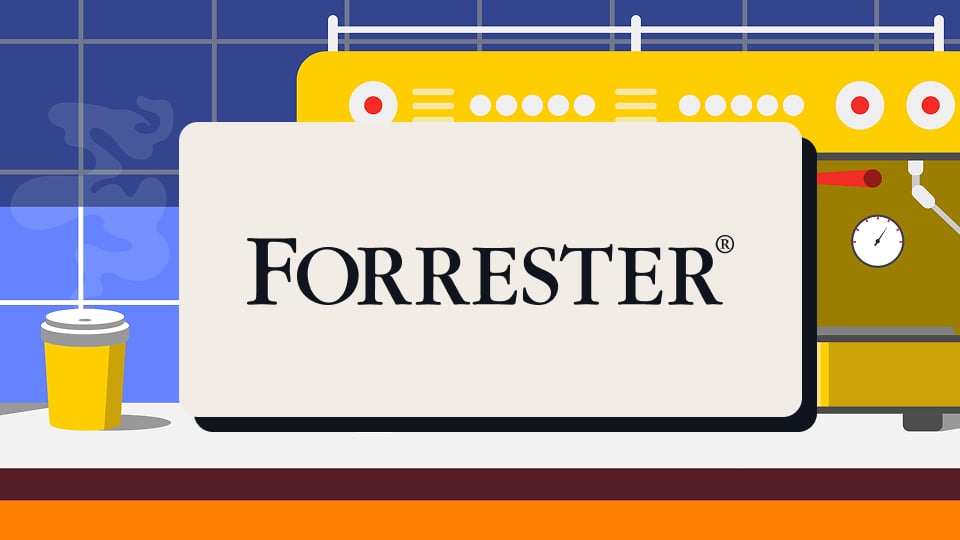Optimizely cuts costs 31% while running 200+ campaigns with Optimizely One
Operating in silos
While they used a generic project management tool to manage their work, it was disconnected from the actual creation and execution of their work, resulting in a lack of visibility and efficient collaboration.
Duplicated and wasted efforts
Content lived in separate spreadsheets, documents, and drives, making it difficult to find brand-approved assets and easily repurpose them, particularly to Optimizely CMS.
Disconnected tech stack
Without a tool for planning, creation and collaboration, that seamlessly connected to Optimizely CMS, data platform and experimentation tools, they were missing a vital piece of the marketing lifecycle.
After acquiring Welcome, Optimizely migrated from Asana to their Content Marketing Platform, which kickstarted their marketing transformation and became the thread of their suite of Optimizely One products:
Content Marketing Platform
Optimizely’s migration from Asana to Optimizely Content Marketing Platform simplified their marketing processes, and enabled them to intake, collaboratively plan and create, and reuse content across various channels (including their CMS).
Digital Asset Management
Using Library, Content Marketing Platform’s integrated DAM, Optimizely has been able to make the most out of their assets, while reducing content waste and duplication.
Content Management System (PaaS and SaaS Core)
The use of CMS12 and the introduction of SaaS Core has provided more flexibility to Optimizely’s marketing team, allowing them to choose the implementation based on each site’s specific need and provide an exceptional digital experience.
Content Recommendations
This enhancement enabled Optimizely to scale personalization and serve visitors with tailored content experiences.
Data Platform
Leveraging data from their CRM enabled Optimizely to build custom audiences and take a more sophisticated approach to personalization.
Experiment Collaboration
Bringing a deeply-integrated tool for experiment planning and collaboration into the fold of Optimizely One enabled Optimizely's marketing team to adopt a “culture of experimentation” and democratize the ideation and creation of experiments.
Efficiency
Optimizely’s marketing team was able to run 200+ campaigns across four “Big Bets” (or top goals) and six integrated campaigns, as well as 50+ concurrent...
Marketing cost
More collaboration, better visibility, and less duplicated efforts allowed Optimizely to reduce their marketing spend by 31%.
Cost per MQL
With a more streamlined approach to planning and executing campaigns and experiments, Optimizely reduced their average cost per MQL by 50%.
Challenge
Optimizely's marketing organization, not unlike many other marketing teams, was facing operational challenges including siloed teams and channels, a top-down decision-making culture often led by the Highest Paid Person's Opinion (HIPPO), and the absence of a common or shared system. Their reliance on a generic project management tool, specifically Asana, highlighted the need for a solution purpose-built for marketers.
While work could be assigned within Asana, all of the content creation and execution had to happen in external tools. It was commonplace for disparate PDFs, spreadsheets and PowerPoints to be flying back and forth via Teams and email, making it difficult to keep track of the latest version of assets. It was also a siloed system that was disconnected from the rest of their Optimizely One tools, and therefore, pushed efficiency to the back burner.
Optimizely recognized that these are common challenges for marketing organizations, and at the end of 2020, acquired Welcome, an industry-leading content marketing platform, which served as the catalyst for their complete marketing transformation and has become the connecting thread across Optimizely One.
Solution
Acting as their own best use case, Optimizely's marketing team relies on Optimizely One—their shared operating system that enables every part of the marketing lifecycle.
They have transformed from a request-based organization with little visibility into what's being worked on and what's coming next, to an agile team that’s empowered to make decisions by being able to easily view marketing plans and stay aligned with clearly-defined marketing priorities.
Their strategic approach is now built on four guiding pillars: brand, Big Bet, integrated campaigns, and content and activities. This framework ensures that every element of their marketing—from planning, content creation, and delivery to personalization and experimentation—is strategically aligned within Optimizely One.
Shafqat Islam
CMO, Optimizely
Simplified Collaboration with a Platform Purpose-Built for Marketers
Beginning with the foundational aspects of the marketing lifecycle: work intake, planning, content creation, and asset storage, Content Marketing Platform (CMP) has revolutionized Optimizely’s marketing team's efficiency and output.
Providing a comprehensive view into upcoming activities through various calendar displays, the platform provides maximum visibility for everyone on the marketing team (and beyond). Shared campaign workspaces consolidate all elements associated with a campaign, from briefs and activities to analytics and related content, streamlining collaboration and eliminating the need for disparate tools and scattered assets.
With Tasks, content creation has become a seamless process, centralizing content briefs and asset creation within a structured workflow. This unified approach ensures that every team member remains synchronized throughout the content development process.

“We now have a standardized process for how we create campaigns and the tasks that ladder up to them,” said Michiel Dorjee, Optimizely’s director of digital experience. “With Asana, our marketing strategy was request-based—someone would fill out a form with a specific ask, and then we’d go off and execute in silos. With CMP, we can actually collaborate on a piece of content (that ladders up to an integrated campaign, which ladders up to a 'Big Bet') by bringing people into Tasks.”
They also bolster their ideation and content creation efforts with embedded AI functionality, including text and image generation and chatGPT, which enables them to improve both content quality and velocity.
The finalized assets find their place in Library, CMP’s native, digital asset management tool. Rich with AI features like AI-tagging of uploaded assets and automated rendition generation with smart cropping, asset management is no longer a manual, time-consuming operation. This not only has simplified their processes around asset management, but also has empowered their marketing team to effortlessly access and use the latest, brand-approved content without navigating through multiple platforms (or asking, "Is this the most up-to-date version?").
The total marketing transformation led by the migration from Asana to Content Marketing Platform has had a material impact on Optimizely’s marketing team efficiency, enabling them to run 200+ campaigns spanning four “Big Bets” and six integrated campaigns, while spending 31% less budget than the previous year.
Julia Maguire
Digital Marketing Director, Optimizely
Flexible Content Delivery, Honed with a Personalized Touch
Once campaigns and content are planned and created, they have to be delivered to their final destination(s). This process has been made simple for Optimizely’s marketing organization with the CMS12+CMP Publishing Integration that connects the two platforms, allowing marketers to plan, create, and collaborate and push to the CMS without ever having to leave CMP. This also means that technical/digital marketers are no longer the blocker for getting content on the site. This has immensely impacted Optimizely’s marketing team’s efficiency when delivering content.
While CMS12, the latest version of Optimizely’s trusted Platform as a Service (PaaS) CMS, continues to be the backbone of Optimizely.com, the marketing team recently encountered a unique use case that demanded a fresh perspective – the launch of their Brand Portal. Facing the challenge of enhancing user experience and adopting a more contemporary design, they sought a solution that was both modern and user-friendly. In response, they leveraged the versatility of SaaS Core, the newest (SaaS) version of Optimizely CMS.
This strategic move allowed them to decouple the front-end, providing a modular and flexible framework to meet the demands of their evolving requirements. The implementation of SaaS Core enabled them to ensure simplicity, without compromising flexibility. This decoupled structure not only aligns with more modern development practices, but also has empowered their team to adapt swiftly to changing needs.
Shafqat Islam
CMO, Optimizely
Once content is live on a webpage, Optimizely’s digital team relies on Content Recommendations and Optimizely Data Platform (ODP) to deliver a tailored (and optimal) customer experience. The former allows for easy-to-manage content personalization, using natural language processing to gather topics visitors are interested in and serve them applicable recommendations for content. The latter leverages data from their CRM, which enables them to build custom audiences in ODP for a more intricate approach to personalization (for example, industry, engagement, and lead scoring).
While these tools, in conjunction with the strategies Optimizely’s marketing team has built around them, have proven exceptional ROI—a noteworthy 50% reduction in cost per MQL—they continue to experiment with different methods and variations for maximum impact.
Which brings us to...
Experimentation and Analysis Equals Continuous Improvement
Experimentation is in Optimizely’s blood, but there’s always room for improvement. With their marketing transformation came a “Big Bet” specific to experimentation, underscoring its importance in the marketing lifecycle: “Establish a Culture of Experimentation.”
While being a more experimental marketing team hinges on changing the mindset of marketers, it helps to have a platform that empowers team members to get involved. To do this, Optimizely’s marketing team leverages Experimentation Collaboration in conjunction with Feature and Web Experimentation to enable their marketing team to submit ideas for experiments, build hypotheses, collaborate on assets, execute through structured workflows, track experiments and record learnings.
With Optimizely One’s suite of experimentation tools, Optimizely is able to run 50+ concurrent tests or at any given time, contributing to 25% growth in revenue from multi-product customers and truly making experimentation a part of their culture.
And with their learnings all in one place, Optimizely can jumpstart the marketing lifecycle by planning and creating content and campaigns based on real, data-driven ideas.
Industry
Tech

